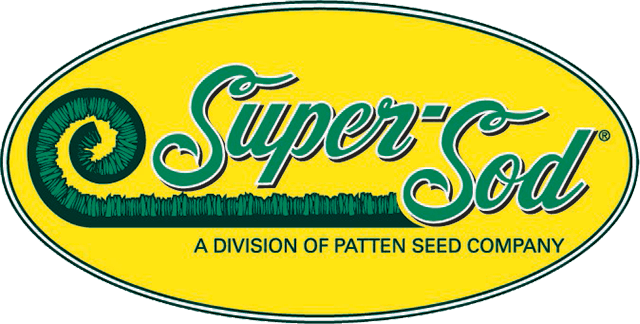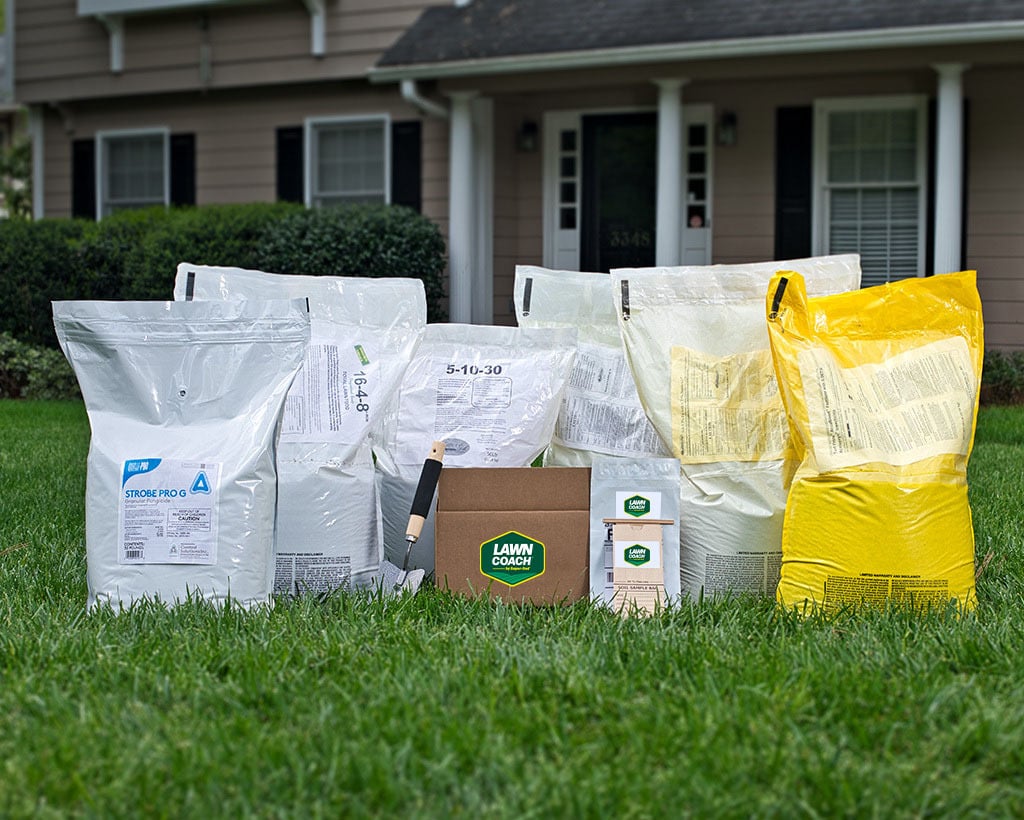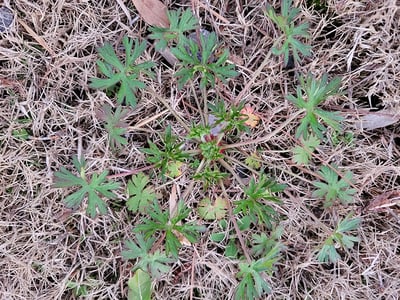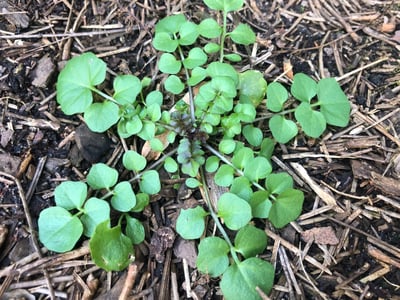
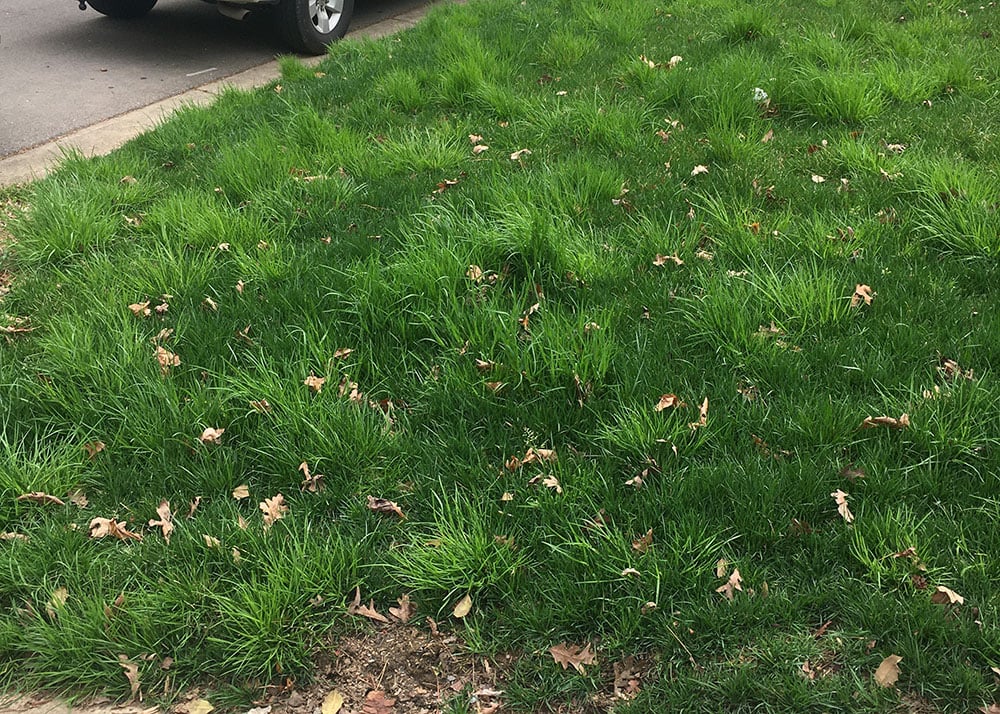
How to Get Rid of Rough Bluegrass Weeds (Poa triv)


Have you ever planted a Tall Fescue lawn from seed and stumbled upon an uninvited guest that looks like Tall Fescue, but somehow seems out of place? If so, you might be looking at Poa trivialis weeds, aka rough bluegrass, roughstalk bluegrass, or known by landscapers as "Poa triv" for short. We'll cover how to identify and control it.
Yes, this invader is related to Poa annua, aka annual poa grass or annual bluegrass. However, Poa trivialis is a taller-growing, perennial weed that will come back year after year in cool climates, even after it dies back in the summer heat, and it requires different weed control methods.
Roughstalk bluegrass is renowned as a common stowaway in non-Blue Tag Certified Tall Fescue seed and stands out as an eyesore in an otherwise pristine Tall Fescue lawn. It's hugely distracting and frustrates even the chillest of gardeners. For this reason, we recommend purchasing only Blue Tag Certified Tall Fescue seed, such as our Elite Tall Fescue seed, because it is certified to be free of weed seeds.
In October's installment of our weed of the month series, we'll teach you how to identify, manage, and prevent this hitchhiker weed that's a particular bandit in Tall Fescue lawns grown from seed.
General Rough Bluegrass ID Features:
To control rough bluegrass, we first need to learn how to identify it.
- Family: Poaceae - the grass family
- Habit: Spreads via stolons to form patches
- Roots: No rhizomes are present
- Stems: Smooth, round, creeping
- Leaves: Pale green to blue-green with boat-shaped tips
- Flowers: Feathery, open panicle during late spring
- Fruit/seed: Small, round seeds in a compact cluster
"Poa triv" is a cool-season grass that's native to Europe, but has naturalized across many parts of the US and can be found anywhere in zones 3 to 7 where Tall Fescue lawns are grown from seed. You'll find rough bluegrass naturalizing in compacted soils in wet lawns, forests, roadsides, and ditches. It grows happily alongside Tall Fescue, likewise thriving in moist, shaded areas with only a few hours of direct sun and in sunnier yards.
Rough bluegrass stands out in Tall Fescue lawns. Pic by Brandon Starnes, Outside Sales, Charlotte, NC.
Roughstalk bluegrass weeds stand out because they are lighter green and grow faster than Tall Fescue. Photo by Dustin Carter, Super-Sod of Cary Manager.
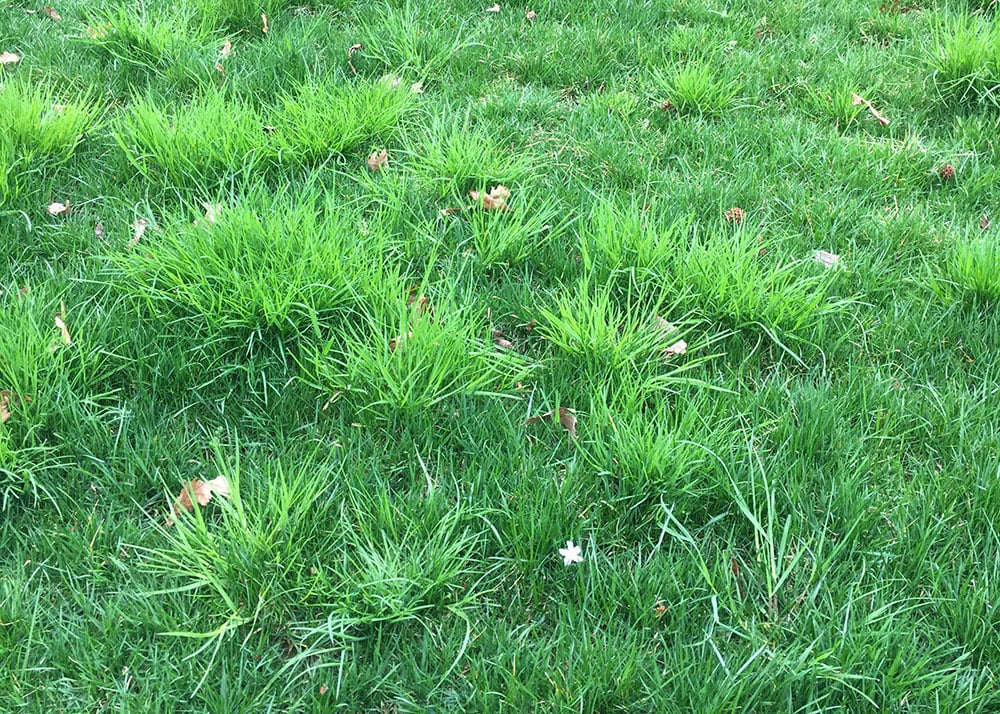
Eat It or Treat It - How to Control Rough Bluegrass
In my books and internet searches, I find no creative ideas for human consumption of roughstalk bluegrass, though some argue that most grasses in the Poaceae at least have edible seeds. There are citations of certain European grassland insects that rely on Poa trivialis for habitat and forage, but I don't see information about that for the United States. If anyone has information about human and animal/insect foraging, please let us know in the comments.
Even if you and I don't want roughstalk bluegrass in our Tall Fescue lawns, there are others (mostly in cool climates) who purchase Poa trivialis for winter overseeding of pastures, roadsides, and golf courses.
If you're caring for a Tall Fescue lawn and would rather not see this distracting weed, here are our weed management tips specific to rough bluegrass.
Rough Bluegrass Weed Prevention:
- 💯 Blue Tag Certified Seed: The ONLY way to prevent Poa triv from invading your lawn is to purchase Blue Tag Certified seed. The Blue Tag Certification for Tall Fescue seed ensures 99% purity and freedom from weed seeds such as rough bluegrass.
- ⛔ Pre-emergent Herbicide: Sadly, pre-emergent herbicide, which usually works so well for weed prevention, doesn't work for preventing roughstalk bluegrass in Tall Fescue lawns. The reason is because this weed is commonly found in bags of non-Blue Tag Certified seed, thus Poa trivialis seeds are being spread at the same time as Tall Fescue seeds. Pre-emergent would prevent not only the Poa triv seeds from germinating but your Tall Fescue seeds as well.
- Roughstalk bluegrass proliferates in compacted, wet areas, so if you have an infestation in your Tall Fescue, consider aerification and topdressing with compost in the fall or winter. This practice will help with bluegrass weed control for the next year.
Manual Removal of Rough Bluegrass:
- Hand pull: Due to the runners, it will take extra time to hand weed once it's established, so before the patches spread, you can take some time hand-pulling the roughstalk bluegrass before it spreads too much to handle. This will require a heaping shovelful of patience.
- Mowing: Mowing doesn't work very well for Poa trivialis because the weed still stands out in Tall Fescue lawns due to its lighter green color and faster growth rate. However, we still recommend regular mowing to keep it somewhat at bay!
- Summer Heat: Summer heat will stunt roughstalk bluegrass and cause it to languish and go dormant, and maybe even kill it. Heat might eliminate it in the warmest areas of Super-Sod's footprint, such as from Atlanta to Charlotte and Raleigh. However, in cooler areas north of those cities, summer heat may only cause it to temporarily die back, and then it will come roaring back to life when temperatures cool off in the fall. At that point, you'll need to consider a non-selective herbicide and patching the bare spots, as explained in the next bullet point.
Chemical Weed Control of Roughstalk Bluegrass:
- 💯 Post-emergent Non-Selective Herbicide: The only way to get rid of established Poa trivialis is with a non-selective herbicide. The downside is that it will also kill the surrounding Tall Fescue lawn because this type of herbicide kills any plant it comes in contact with. However, you can patch those bare spots with Blue Tag Certified Tall Fescue seed from us or with individual rolls of Tall Fescue sod for a quick fix.
For a deeper dive into understanding Poa trivialis, the following resources are enlightening. There is little information on this weed in online University resources in Super-Sod's footprint besides from NC State, so I've posted links to Universities in cooler climates where rough bluegrass is a greater concern.
Questions? Leave a comment below.
If you're a weed aficionado like me, check back here for future Weeds of the Month. Until then, happy weeding!
